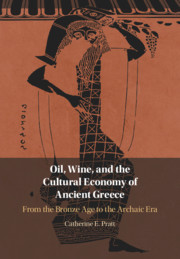Refine search
Actions for selected content:
30 results
Brazilian agricultural renaissance: sugar imported by Portugal (1761–1807)
-
- Journal:
- Revista de Historia Economica - Journal of Iberian and Latin American Economic History , First View
- Published online by Cambridge University Press:
- 21 November 2025, pp. 1-22
-
- Article
- Export citation
Chapter 9 - Sugar
- from Part III - Applications
-
-
- Book:
- Commodities and Literature
- Published online:
- 14 October 2025
- Print publication:
- 09 October 2025, pp 163-178
-
- Chapter
- Export citation
Chapter 13 - Water in World Literature
- from Part III - Applications
-
-
- Book:
- Commodities and Literature
- Published online:
- 14 October 2025
- Print publication:
- 09 October 2025, pp 228-243
-
- Chapter
- Export citation
Chapter 8 - The Shock of Aestheticism
-
-
- Book:
- Nineteenth-Century Literature in Transition: The 1870s
- Published online:
- 30 January 2025
- Print publication:
- 06 February 2025, pp 166-185
-
- Chapter
- Export citation
17 - The Poem and the Commodity
- from Part III - The Poem in the World
-
-
- Book:
- The Cambridge Companion to the Poem
- Published online:
- 30 May 2024
- Print publication:
- 06 June 2024, pp 283-299
-
- Chapter
- Export citation
Hard cash, easy credit, fictitious capital: Critical reflections on money as a fetishised social relation
-
- Journal:
- Finance and Society / Volume 1 / Issue 1 / 2015
- Published online by Cambridge University Press:
- 09 November 2023, pp. 20-37
-
- Article
-
- You have access
- Open access
- Export citation
2 - Economic Networks
-
- Book:
- Connecting Communities in Archaic Greece
- Published online:
- 13 July 2023
- Print publication:
- 03 August 2023, pp 31-87
-
- Chapter
- Export citation
The fetish in the market
-
- Journal:
- Modern Asian Studies / Volume 57 / Issue 5 / September 2023
- Published online by Cambridge University Press:
- 15 June 2023, pp. 1650-1657
- Print publication:
- September 2023
-
- Article
-
- You have access
- Open access
- HTML
- Export citation
Do Extreme CIT Position Changes Move Prices in Grain Futures Markets?
-
- Journal:
- Journal of Agricultural and Applied Economics / Volume 54 / Issue 4 / November 2022
- Published online by Cambridge University Press:
- 03 January 2023, pp. 792-814
-
- Article
-
- You have access
- Open access
- HTML
- Export citation
7 - Denaturalising the Concept of Territory in International Law
- from Part II - Unmaking International Law
-
-
- Book:
- Locating Nature
- Published online:
- 22 September 2022
- Print publication:
- 29 September 2022, pp 179-199
-
- Chapter
- Export citation
Nine - Temporality and Replacement
- from Part III - Thresholds
-
- Book:
- The Anthropology of Intensity
- Published online:
- 05 May 2022
- Print publication:
- 19 May 2022, pp 243-270
-
- Chapter
- Export citation
10 - Cryptocurrency Regulation
- from The Third Era
-
- Book:
- A History of Financial Technology and Regulation
- Published online:
- 24 March 2022
- Print publication:
- 31 March 2022, pp 129-152
-
- Chapter
- Export citation
Chapter 5 - There Is No “More Commodification”: Periodizing Capitalist Transformation
-
-
- Book:
- After Marx
- Published online:
- 12 March 2022
- Print publication:
- 17 March 2022, pp 86-100
-
- Chapter
- Export citation
Of Nuclear Rials and Golden Shoes: Scaling Commodities and Currencies across Sanctions on Iran
-
- Journal:
- International Journal of Middle East Studies / Volume 53 / Issue 4 / November 2021
- Published online by Cambridge University Press:
- 31 August 2021, pp. 604-619
- Print publication:
- November 2021
-
- Article
- Export citation
Two - Outline of an Approach to Money
-
- Book:
- The Origins of Money in the Iron Age Mediterranean World
- Published online:
- 17 September 2021
- Print publication:
- 26 August 2021, pp 17-54
-
- Chapter
- Export citation
Chapter 4 - Sexual Desire
-
- Book:
- Hunger, Appetite and the Politics of the Renaissance Stage
- Published online:
- 28 May 2021
- Print publication:
- 10 June 2021, pp 100-123
-
- Chapter
- Export citation
3 - Actualising Authority through Public and Private Law
-
- Book:
- Reconsidering REDD+
- Published online:
- 13 May 2021
- Print publication:
- 03 June 2021, pp 168-211
-
- Chapter
- Export citation

Oil, Wine, and the Cultural Economy of Ancient Greece
- From the Bronze Age to the Archaic Era
-
- Published online:
- 19 March 2021
- Print publication:
- 18 March 2021
2 - “Or Such a Woman as…”
-
- Book:
- Ancient Greek Lists
- Published online:
- 05 March 2021
- Print publication:
- 11 March 2021, pp 48-77
-
- Chapter
- Export citation
3 - The CGE Model Database
-
- Book:
- Introduction to Computable General Equilibrium Models
- Published online:
- 11 December 2020
- Print publication:
- 07 January 2021, pp 66-107
-
- Chapter
- Export citation
